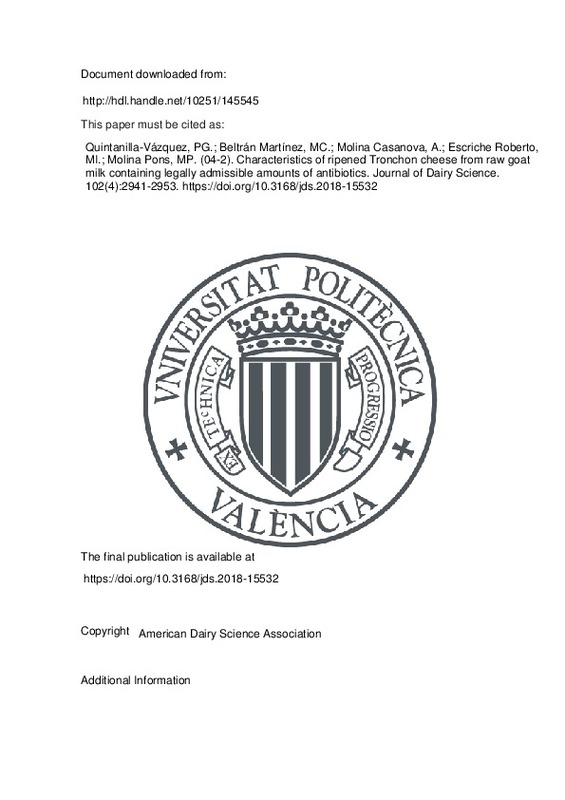JavaScript is disabled for your browser. Some features of this site may not work without it.
Buscar en RiuNet
Listar
Mi cuenta
Estadísticas
Ayuda RiuNet
Admin. UPV
Characteristics of ripened Tronchon cheese from raw goat milk containing legally admissible amounts of antibiotics
Mostrar el registro completo del ítem
Quintanilla-Vázquez, PG.; Beltrán Martínez, MC.; Molina Casanova, A.; Escriche Roberto, MI.; Molina Pons, MP. (2019). Characteristics of ripened Tronchon cheese from raw goat milk containing legally admissible amounts of antibiotics. Journal of Dairy Science. 102(4):2941-2953. https://doi.org/10.3168/jds.2018-15532
Por favor, use este identificador para citar o enlazar este ítem: http://hdl.handle.net/10251/145545
Ficheros en el ítem
Metadatos del ítem
| Título: | Characteristics of ripened Tronchon cheese from raw goat milk containing legally admissible amounts of antibiotics | |
| Autor: | Molina Casanova, A.M. | |
| Entidad UPV: |
|
|
| Fecha difusión: |
|
|
| Resumen: |
[EN] The aim of this study was to evaluate the transfer of the most widely used antibiotics in dairy goats from milk to cheese as well as their effect on the cheese-making process and cheese characteristics during ripening. ...[+]
|
|
| Palabras clave: |
|
|
| Derechos de uso: | Reserva de todos los derechos | |
| Fuente: |
|
|
| DOI: |
|
|
| Editorial: |
|
|
| Versión del editor: | https://doi.org/10.3168/jds.2018-15532 | |
| Código del Proyecto: |
|
|
| Agradecimientos: |
This work is part of the AGL-2013-45147-R Project funded by Ministerio de Ciencia e Innovación (Madrid, Spain). P. Quintanilla thanks Universitat Politècnica de València (Valencia, Spain) for the grant received for the ...[+]
|
|
| Tipo: |
|







![[Cerrado]](/themes/UPV/images/candado.png)


